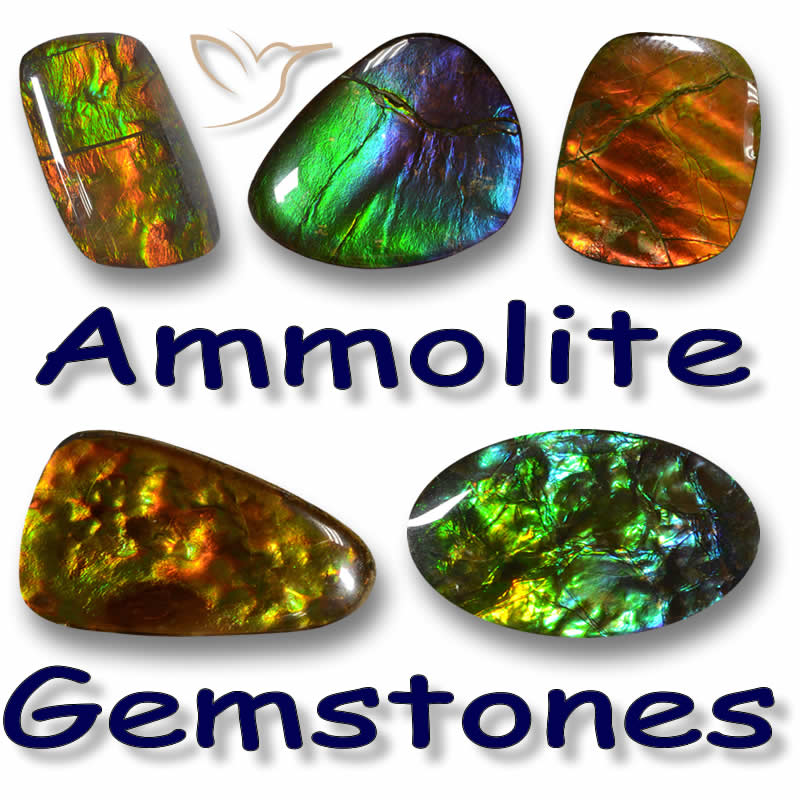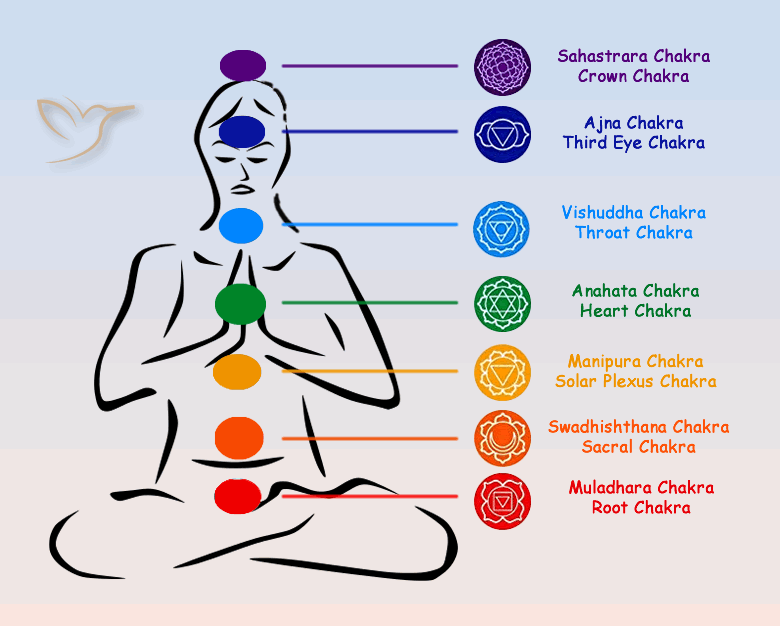Ammolite Gemstone Information

Introduction
The iridescent, opal-like ammolite stands out as one of the rare organic gemstones on the market. While most gemstones originate from minerals, a few - like the well-known amber and pearls - come from organic sources. This means they result from biological processes rather than geological ones. Amber forms from hardened pine tree sap over 2 to 10 million years, and pearls develop inside oysters or other mollusks in 5 to 20 years.
But ammolite? It emerges from the crushed shells of ancient ammonite marine creatures, taking about 70 million years to form. Pretty mind-boggling, right?
For a deeper dive into this captivating stone, explore our comprehensive ammolite gemstone resource page.
Ammolite Colors

Ammolite can display nearly any color imaginable, often multiple hues on a single stone. Green and red appear most commonly, while blue and purple show up less frequently.
The top-value ammolites feature vibrant colors in two or three shades, with each covering a good portion of the surface.
These colors should shine brightly as you rotate the stone and can be called vivid, bright, brilliant, reflective, or dazzling.
What Causes the Color in Ammolites?
Ammolite contains elements like aluminum, chromium, copper, and iron, but these don't drive its wide color range. Instead, the colors stem from light interference - similar to what you see in soap bubbles or oil slicks on water. The ammolite surface reflects a spectrum of colors under natural or artificial light. The specific hues depend on the material's thickness, measured in mere microns, which greatly impacts the visuals. Light waves travel different distances through varying thicknesses, interfering to create the array of colors. Thicker layers yield reds and greens and prove more durable, while thinner ones produce blues and violets but are more fragile and prone to cracking - making them rarer and pricier. Each color layer represents a distinct stratum in the gem.
Ammolite Species
All ammolite comes from one species: the fossilized shells of ancient ammonites, composed of aragonite - the same mineral in pearls, mussels, and abalone. Sometimes called calcenite or korite (trade names), or gem ammonite and aapoak (a Native American term meaning "crawling stone").
Ammolite Patterns
Like opal with its similar colors, ammolite gems are unique but often share patterns that could almost define varieties. Some notable ones include:
- Stained Glass
- Resembling multi-colored glass panes.
- Dragon Skin
- Evoking the scaly hide of mythical dragons.
- Cobblestone
- With uneven but regular rows, like old European streets.
- Paintbrush
- Featuring broad color strokes.
- Lava
- Showing red rivers against a green backdrop.
- Sunset
- With red and orange landscapes.
Many more patterns exist, typically from the Blue Zone or K Zone in North America's Bearpaw Formation in the Rocky Mountains.
Spiritual Meaning of Ammolite
Disclaimer: The information on spiritual meanings and health benefits is for educational purposes only and not intended as medical advice. Always consult a healthcare professional for health issues.
Before ammolite hit the global market as a gem, the Blackfoot tribes of Canada knew it as 'Iniskim' or buffalo stone, believed to draw buffalo during hunts.
Their lands spanned the Great Plains to the Rockies in modern Alberta and Montana. Legend tells of a harsh winter with failed hunts; a woman dreamed of a magical stone to attract buffalo. While gathering wood, she heard singing from a cave and found a rainbow stone. Soon after, buffalo appeared, saving the tribe. Since then, it's seen as an amulet for life's needs and good luck.
This gem's power draws from its ammonite origins - prehistoric sea creatures with aragonite shells that boost energy, confidence, and stress relief. Aragonite also forms mother-of-pearl and pearls, adding their spiritual qualities.
The spiral shells echo ancient symbols worldwide, representing rebirth, energy, seasons, growth, journeys, and more.
Ammolite energies promote harmony, prosperity, protection from harm, and transform negative to positive energy.
Ammolite and the Chakras

Chakras are energy centers in the body, also called Qi or Prana. Seven exist, each tied to physical, emotional, or mental states and a color: Crown (purple), Third Eye (indigo), Throat (blue), Heart (green), Solar Plexus (yellow), Sacral (orange), Root (red).
Ammolite, dubbed the "Seven Color Prosperity Stone," can include all chakra colors.
It positively influences all, or a dominant color affects its chakra more:
- Red = love
- Orange = creativity
- Yellow = prosperity
- Green = knowledge
- Blue = good health
- Indigo = peace
- Violet = growth and energy
Health Benefits of Ammolite
Disclaimer: The information on spiritual meanings and health benefits is for educational purposes only and not intended as medical advice. Always consult a healthcare professional for health issues.
Ammolite may aid detoxification, purification, energy boosts, and stamina. It could regulate heartbeat, stabilize blood pressure, enhance mental powers, creativity, libido, fertility, and decision-making clarity.
We're not experts, but wearing it in jewelry lets the crystal influence you easily.
Carry it in your pocket as a touchstone, hold during meditation, or place on chakra points while lying down. Use in baths (if water-safe), or decorate your home - some energize workspaces, others relaxation areas.
Clean ammolite weekly under warm water, then dry in sun for 30 minutes. Handle gently due to its delicacy.
Ammolite Price
Ammolite Price List |
||
| Color | Weight range | Price range / USD |
|---|---|---|
| All Colors | 1ct and more | $5 - $60/ct |
Color drives price in colored gems, including ammolite. Other factors matter, and personal taste counts, but guidelines help.
Grade from top (three bright colors, full coverage, visible all angles) down to lesser colors, fading quicker, dull hues, or none.
Subjective elements like full spectra, rare pinks/blues, patterns, depth, flashes, or blemishes affect value.
All gem-quality ammolite hails from Canada's Rockies, so origin doesn't sway price much.
Ammolite Discovery
Native Americans may have used ammolite for decoration and ceremonies, but it reached the world via Canada's Geological Survey in 1906. It intrigued collectors and geologists for years until paleontologists found colorful ammonite fossils.
Pierre Pare and Rene Vandevelde mined and sold it locally, recognizing its potential. In 1981, they got it recognized as a gem by the World Jewellery Confederation and started mining.
Where is Ammolite Found?

All ammolite gems come from Alberta's Rocky Mountains in Canada. Aurora and Korite produce gem material, cutting on-site, so little rough reaches markets. Rarely, alluvial miners find some in Alberta and Montana rivers, but not much.
Ammonite shells appear elsewhere - like England, Morocco, Madagascar - but their iridescence is too weak for gems.
How is Ammolite Formed?
Ammolite's story spans millions of years. Ancient oceans teemed with ammonites - squid-like creatures in spiral shells, like nautilus. Those museum spirals? Ammonites.
They dominated oceans for over 100 million years but perished in the dinosaur-extincting event 65 million years ago. Shells sank; most crushed, but some fossilized in sediments turning to rock. East of today's Rockies lay the Western Interior Seaway; shells buried in mountain silt. Over time, this became stone, uplifted into the Rockies by tectonics.
Now in the Bearpaw Formation under Alberta, Saskatchewan, Montana, Utah. Most is crushed shell; rare whole fossils, even rarer iridescent layers.
Ammonites had aragonite, like mother-of-pearl and pearls; trapped nacre creates ammolite colors.
Can Ammolite be Treated?
Ammolite is a thin fossil shell layer on dark shale, often under 1mm. Rarely, it's cut naturally with epoxy coating to prevent splits, but most become doublets or triplets.
Like opals, this protects soft gems. Doublet: ammolite on host rock. Triplet: adds transparent cover.
Korite's secret method, likely using spinel or quartz, boosts Mohs from 4 to nearly 8, strengthening it dramatically.
What Jewelry is Ammolite Suitable For?
Natural ammolite rates 3.5-4.5 Mohs, too soft for jewelry without protection. Doublets/triplets enable most types, but protective settings help, especially rings.
Its unique colors, patterns, freeforms, and sizes make stunning pendants, brooches, necklaces, earrings - one-of-a-kind pieces.
Did You Know? Interesting Facts about Ammolite
- How did Ammolite get its name?
- Ammolite from ammonite, named for Egyptian god Ammon with ram horns resembling fossils. Pliny called them ammonis cornua.
- Ancient Greeks used fossilized ammonite as the original Olympic discus.
- Ammolite is one of three new gems in 300 years by World Jewellery Confederation, with tanzanite and sugilite.
- Ammolite Gemstones are Fossils?
- Debate: not mineral or fully organic, but fossil. No exact formula, but classified organic for now.
- In India, ammonites link to Vishnu, used in ceremonies; collected from Nepal's Gandaki River.
- Buying Ammolite could be a good investment
- Korite says deposits exhaust in 20 years; value up 300% in 10 years.
- Like tanzanite, a "generation" gem; supplies last one generation.
- Mining: 2 acres/year now, expanding to 8; production to double from 8 million carats.
- Ammolite not sold by carat weight.
- Thin layer in composites; priced by size and color play.
- Links to Capricorn zodiac, though not official birthstone.
How to Care for Ammolite
Natural ammolite is 3.5-4.5 Mohs, soft for jewelry; most assembled as doublets/triplets for durability. Some get epoxy to prevent cracks.
Treatments allow jewelry use without chipping, but avoid long water soaks to prevent backing lift or fogging.
No ultrasonic or steam cleaners; heat/agitation damages bonds. Use soft cloth, mild soap if needed.
Store away from harder items; use cloth bags or boxes.
How to Tell a Real Ammolite

Ammolite's value tempts fakes, but few exist yet. Similar materials like labradorite, abalone, paua, black opal rarely substitute. Obvious fakes lack color shift on movement.
Buy from reputable dealers for assurance.
What is So Special about Ammolite?
Owning ammolite means holding a rare gem from one spot, forged over millions of years under ancient seas. Colors shimmer uniquely, each stone one-of-a-kind with distinct patterns.
Surviving shells are few; in Alberta, only 5% yield gem material - a thin layer. Just 20% of that is cut-worthy, highlighting rarity.
Mining involves locals from start to finish. Hard work yields little: a bucket rough per day, one cup top gems yearly. Intact fossils halt work for museum preservation.
Mined areas restore naturally: layers replaced, plants replanted. If only all mines cared this much for the environment.
To learn more about the rarity and unique traits, visit our detailed page on rare ammolite features.
Ammolite - Gemological Properties
|
Chemical Formula: |
Calcium carbonate (CaCO3); 3-4% variable mineral traces). |
|
Crystal Structure: |
Orthorhombic |
|
Color: |
Gray-brown, multicolored iridescence |
|
Hardness: |
4 on the Mohs scale (varies in composition) |
|
Refractive Index: |
1.52 - 1.68 |
|
Density: |
2.75 - 2.80 |
|
Cleavage: |
Pinacoidal |
|
Transparency: |
Opaque |
|
Double Refraction or Birefringence: |
0.155 |
|
Luster: |
Greasy to dull; vitreous to resinous |
|
Fluorescence: |
Ultraviolet light - mustard yellowish |
Frequently Asked Questions
What is Ammolite?
Ammolite is an iridescent organic gemstone formed from fossilized ammonite shells over millions of years.
What colors can Ammolite display?
It can show a wide range, including greens, reds, blues, and purples, often multiple on one stone.
Where is gem-quality Ammolite sourced?
Exclusively from the Rocky Mountains in Alberta, Canada.
Is Ammolite treated?
Most is made into doublets or triplets for durability, with protective coverings.
How should I care for Ammolite jewelry?
Clean with a soft cloth and mild soap; avoid water soaks, ultrasonics, and store separately.
What makes Ammolite special?
Its rarity, unique colors and patterns, ancient origins, and ethical mining practices.
Can Ammolite be used in rings?
Yes, with protective settings and treatments, though better for pendants and earrings.

